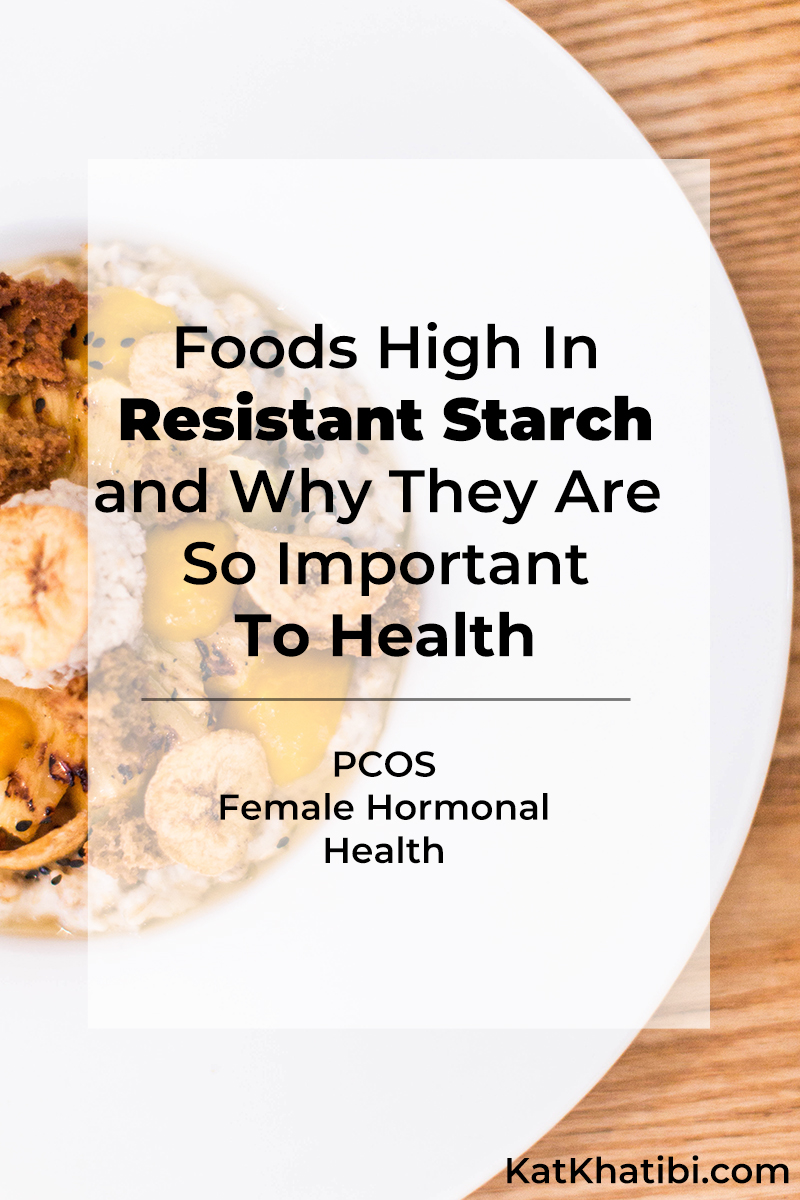Today I’m going over some tasty foods high in resistant starch and why they are so important to health. Resistant starches are such superfoods we all need to start incorporating them into our diets. Especially those of us with hormonal imbalance, pcos, gut dysbiosis, autoimmune, etc. My keto

Why Resistant Starch is Healthy
- improves appetite
- enhances cognitive and motor performance
- improves gut barrier function (repairs leaky gut)
- reduces markers of oxidative stress and inflammation
- increases xenobiotic pathways (detoxes drugs, food additives, and environmental pollutants like BPA and phthalates)
- blood flow to the colon
- helps with our overall nutrient and mineral absorption
- feeds the good bacteria in our body
- effective at lowering blood sugar levels after meals
Why Do Resistant Starches Need To Be Heated and Cooled?
It’s quite fascinating, but the way you prepare starch-containing foods affects their starch content. Cooking or heating destroys most resistant starches. However, you can “recapture” the resistant starch content of some foods by letting them cool after cooking. Looks like leftovers are healthier for you than freshly cooked in the case of resistant starch!
Resistant starch has the best of fiber and the best of carbohydrate. Fiber is good for your flora, but it is not digestible, while carbs do not feed the flora but do give nutrients. Resistant starch gives a little bit of nutrient, but it is so slowly absorbed that it gives you between 7 and 9 hours of slow stable blood sugar.
You should aim to get between 20 to 45 grams per day of resistant starch into your diet.
What are the main types of resistant starch?
- RS1 – This type of resistant starch is actually bound up and physically protected.
- RS2 – This type is ungelatinized.
- RS3 – This is otherwise known as retrograde starch, and typically involves cooking and cooling something. In fact, the more times something is cooked and cooled, the higher they get in resistant starch.
- RS4, RS5, RS6 – There are more than just the ones listed, but these are synthesized forms of resistant starch that we might be able to see at one point or another.
Some of My Favorite Foods High In Resistant Starch
Raw oats (overnight oats are great – cook then cool overnight to eat in the morning)
Navy beans
Northern beans
Cannellini beans
Peas
Adzuki beans – also the densest source of magnesium
Kidney beans
Lentils
Black beans
Garbanzo beans
Lima beans
Pearl barley
Green bananas
Banana Peels
Potatoes (Cooked and cooled potatoes – the most times you do it the more resistant starch)
Sushi rice (cooked and cooled)
Pumpernickel bread
Rye bread
Yams
Plantains
Muesli
Corn tortillas
Sourdough bread
Cooked millet
Brown rice
Rice pasta
Corn
Chickpeas
Pinto beans
Hi-maize flour
All beans have some resistant starch: white beans – including navy, northern and cannellini – have the most.
My Favorite Resistant Starch Go-tos
- Cuban Style Black Bean
- Overnight Oats
- Hummus
- Tostones
- Pea Protein Powder Smoothies
- Fried Plantains
- Sopa De Garbanzos, Chickpea Soup
Hmmm, most of those show off my Cuban side lol. Just a side note, make tostones in COCONUT OIL. It will change your life! I sprinkle some Everything Bagel seasoning from The Spice House on top and dip in some lime juice or some limey hummus.
Share Your Favorites
Get to the comments and share your favorite resistant starches. Are there any

1 Comment on Foods High In Resistant Starch and Why They Are So Important To Health